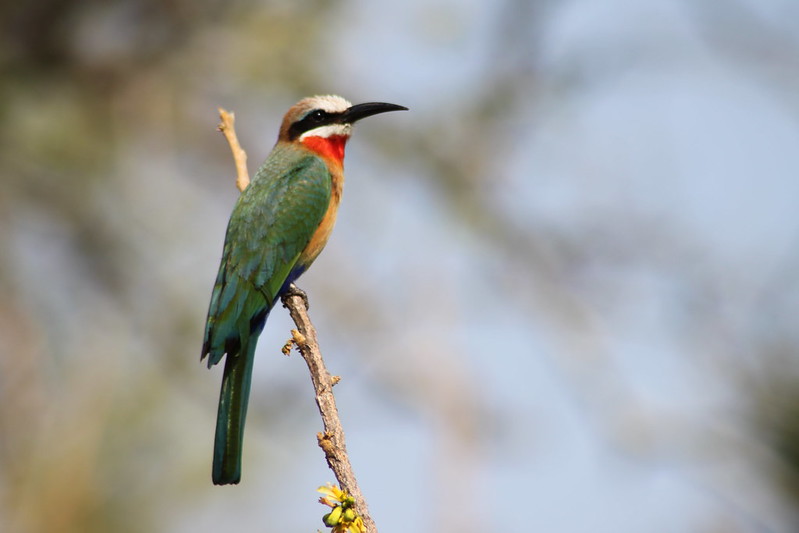With over 440 bird species that were recorded in this park, Selous is a fantastic place to watch birds. The most spectacular bird habitats within this reserve are the lagoons, islands, River Rufiji, channels as well as sandbanks. The best way to observe the bird species living here is by going for a boat safari. Starting in the month of November to April, there are is a large number of Migratory birds.
The most outstanding bird species worth seeing include the Spur-winged lapwing , African wattled lapwing, The White-fronted bee-eater, The Pel’s fishing owl Rare, The African spoonbill, The Common White-headed vulture.
Birding specials
the Pearl-spotted owlet, White-headed lapwing , African skimmer , Böhm’s bee-eater, Yellow-billed stork, Pel’s fishing owl , Broad-billed roller, White-fronted plover , Brown-headed parrot , White-backed vulture, Brown-necked parrot , Black-winged stilt , Palm-nut vulture , Dickinson’s kestrel , Racket-tailed roller, Thick-billed cuckoo , White-backed night heron , Carmine bee-eater as well as the Rock pratincole
Best time for bird watching
The Selous is a great bird watching location all year round. Given that migratory birds from northern Africa as well as Europe are present beginning in the month of April, it’s the finest time to view birds. The resident bird species start Nesting nearly at the same time so it is not that hard to see birds during the breeding plumage. As the wet season comes to an end, most of the camps close (that is in the month of April), and then re-open yet again in June. to enjoy the best wildlife views we advice travelers to visit from the month of June to October.

Among the most frequently seen bird species in the Selous Game Reserve are: the mosque swallow, the brown-breasted barbet, purple-banded sunbird, Mangrove kingfishers, Von der Decken’s hornbill, African skimmers, a pearl-spotted owl, palm-nut vulture, Layard’s black-headed weavers, freckled nightjars, grey Penduline-tit, grey-hooded kingfisher, red-throated twin spot, waders, wattle-eyed flycatchers, broad-billed roller, spotted-flanked barbet, green-billed coucal, Arnot’s chat, long-tailed fiscal, Sterling’s barred warbler, Livingstone’s flycatcher, white helmet-shrikes, red-winged warbler, Boehm’s bee-eater, red-throated twin spot, black cuckoo-shrike, green-capped eremomela, green-capped eremomela, red-faced Crombec, red-billed helmetshrike, spotted-flanked barbet, yellow-bellied bulbul, Bennett’s woodpecker, Dickinson’s kestrel as well as a pearl-spotted owl.
Best parks in Tanzania to watch birds
All the well-known safari parks offer remarkable opportunities for bird watching and even specials can be spotted easily nearly everywhere you go. the northern Tanzania Arusha National Park that is generally ignored presents a amazing array of habitats and even prides in its tremendous list of around 400 bird species living inside its small expanse. In addition Lake Manyara offers an awesome diversity of bird species associated with water.
A bird watching safari in Southern Tanzania
Safaris to Southern Tanzania include activities like visiting the Selous plus Ruaha wildlife reserves, even though the more expensive Western areas offer Mahale and Katavi game reserves.
In Southern Tanzania, the most well visited national parks include Ruaha as well as the Selous, although these in comparison to the parks in northern Tanzania are extremely less visited as, however these southern parks provide long plus short safaris, game drives in open-sided tourist vehicles, boat safaris, plus the one of a kind yet very exciting walking safaris. See the average cost of a Safari in Tanzania.
These parks provide small tented lodges which provide more level of privacy in comparison to the large hotels within the North, which is fairly cheaper in comparison to accommodation provided in northern Tanzania
